EXTREMELY RARE! WWII "SECRET" May 29th, 1945 Battle of Okinawa Rear "Commander of Amphibious Group Five" Admiral Jerauld Wright Combat Intelligence Report (1 Page)
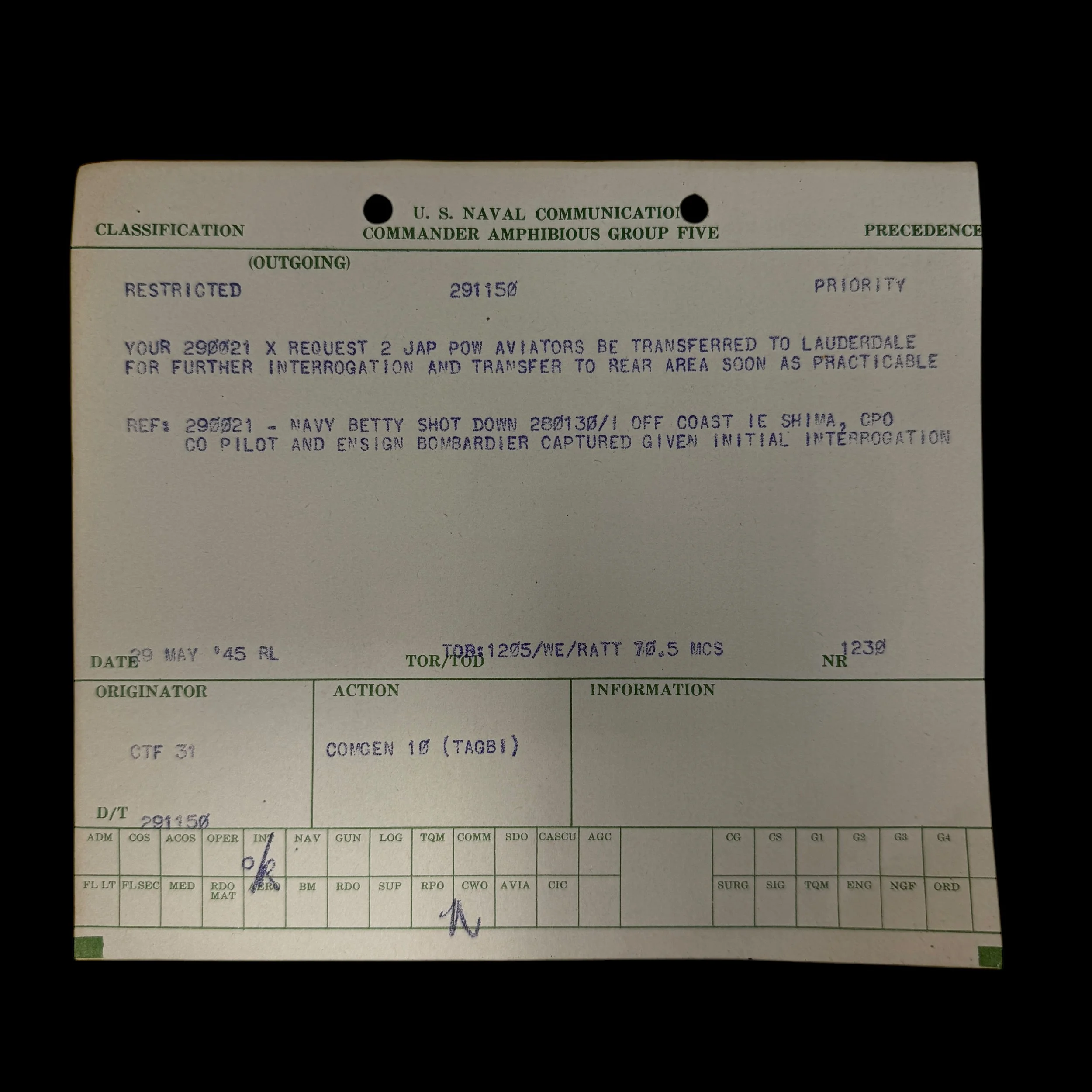

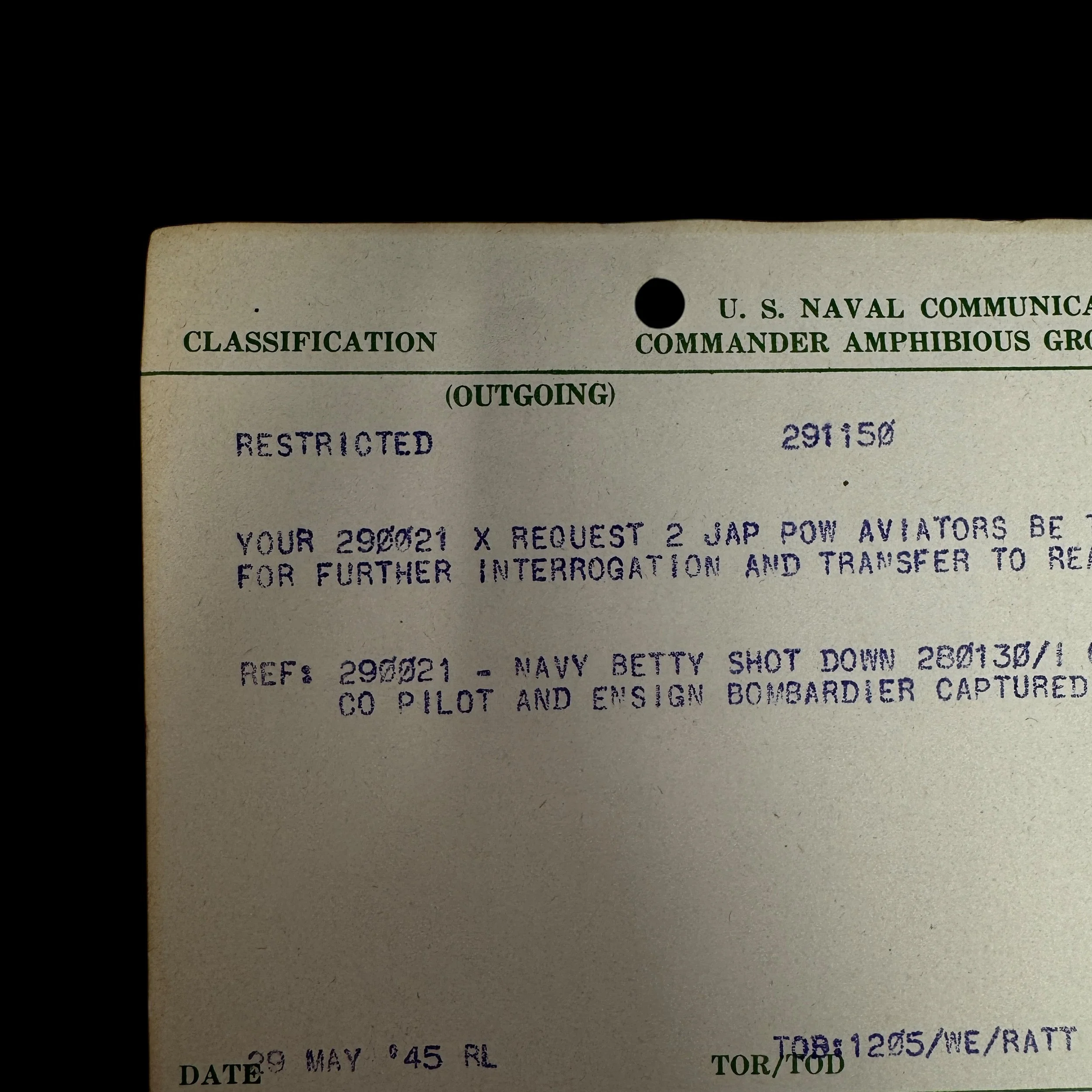
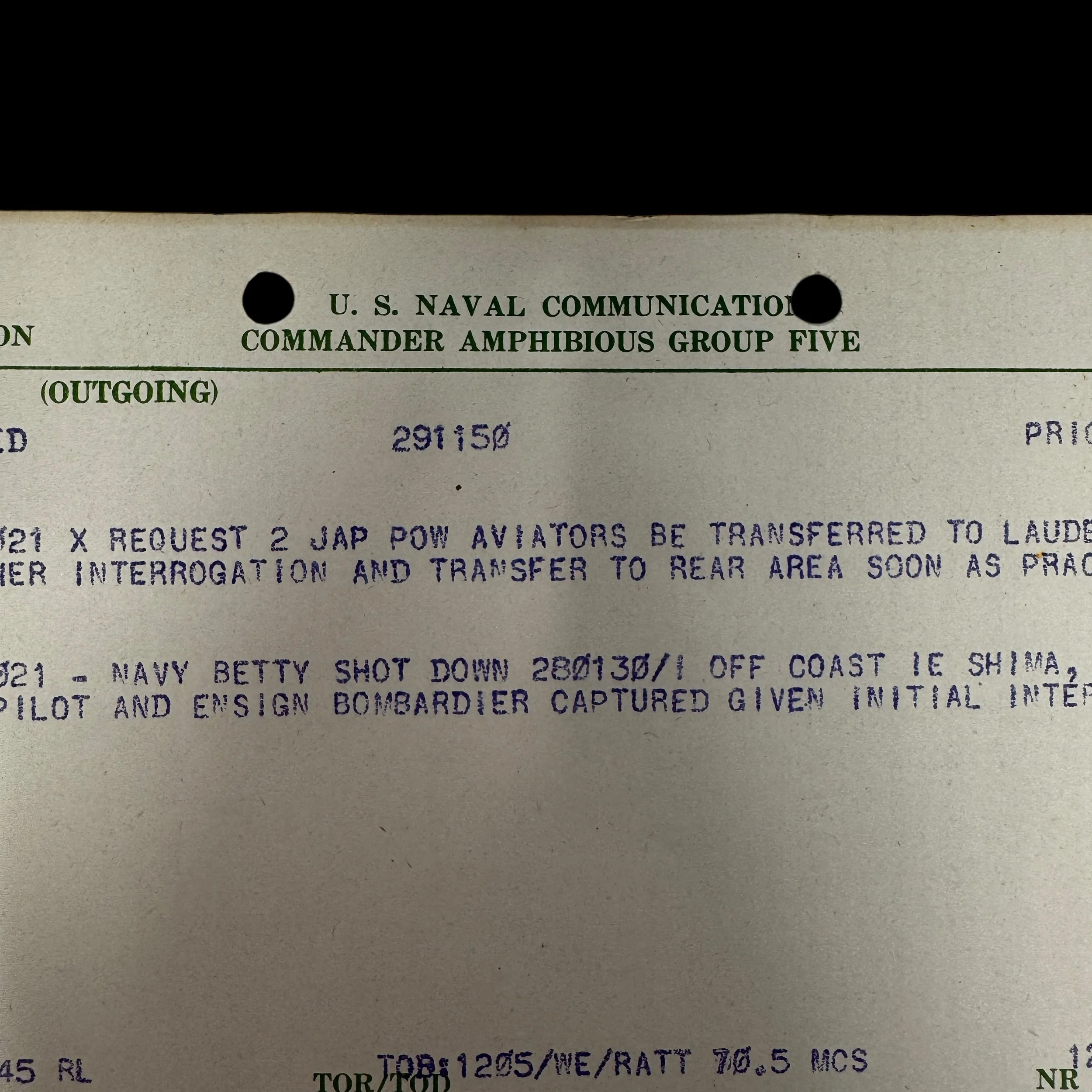
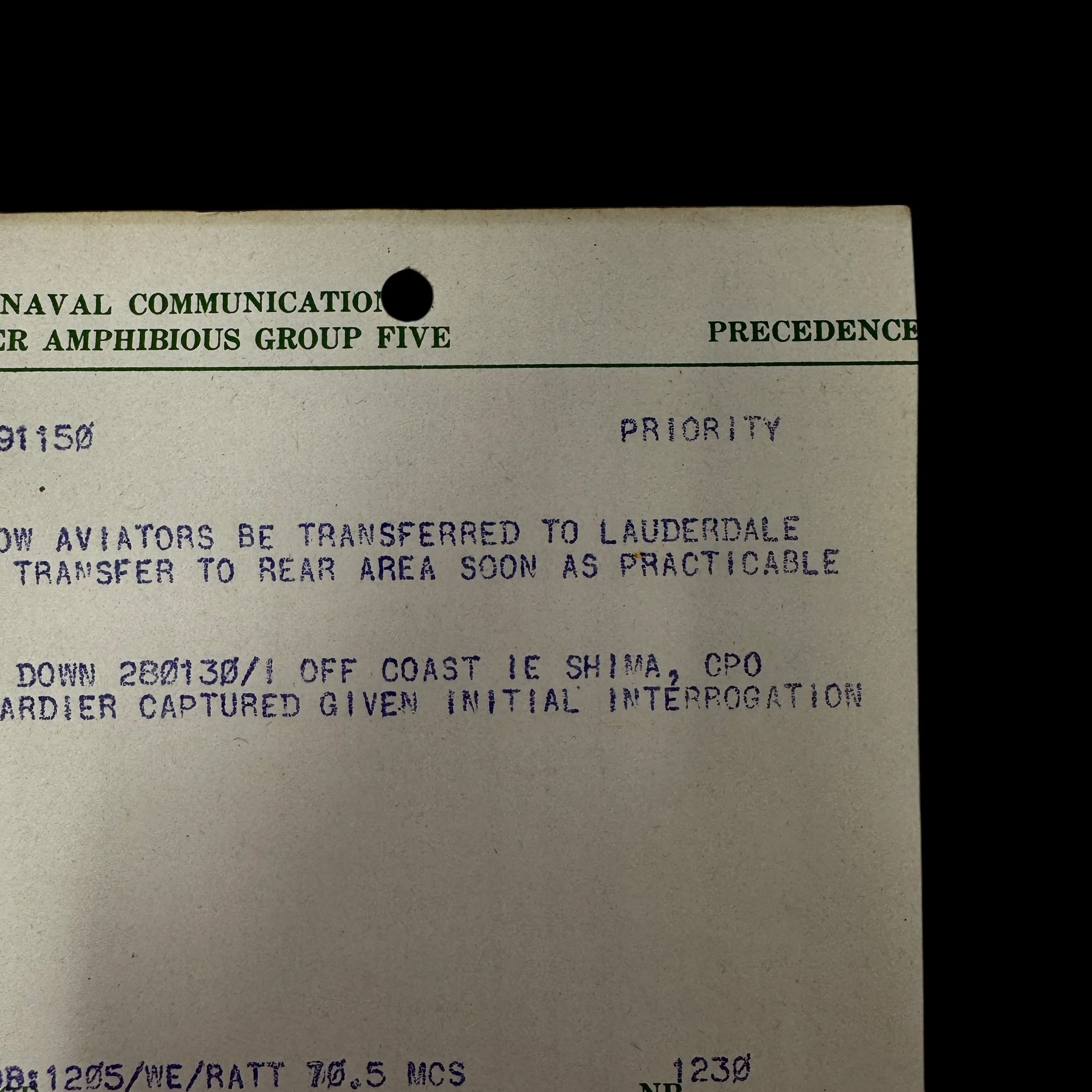
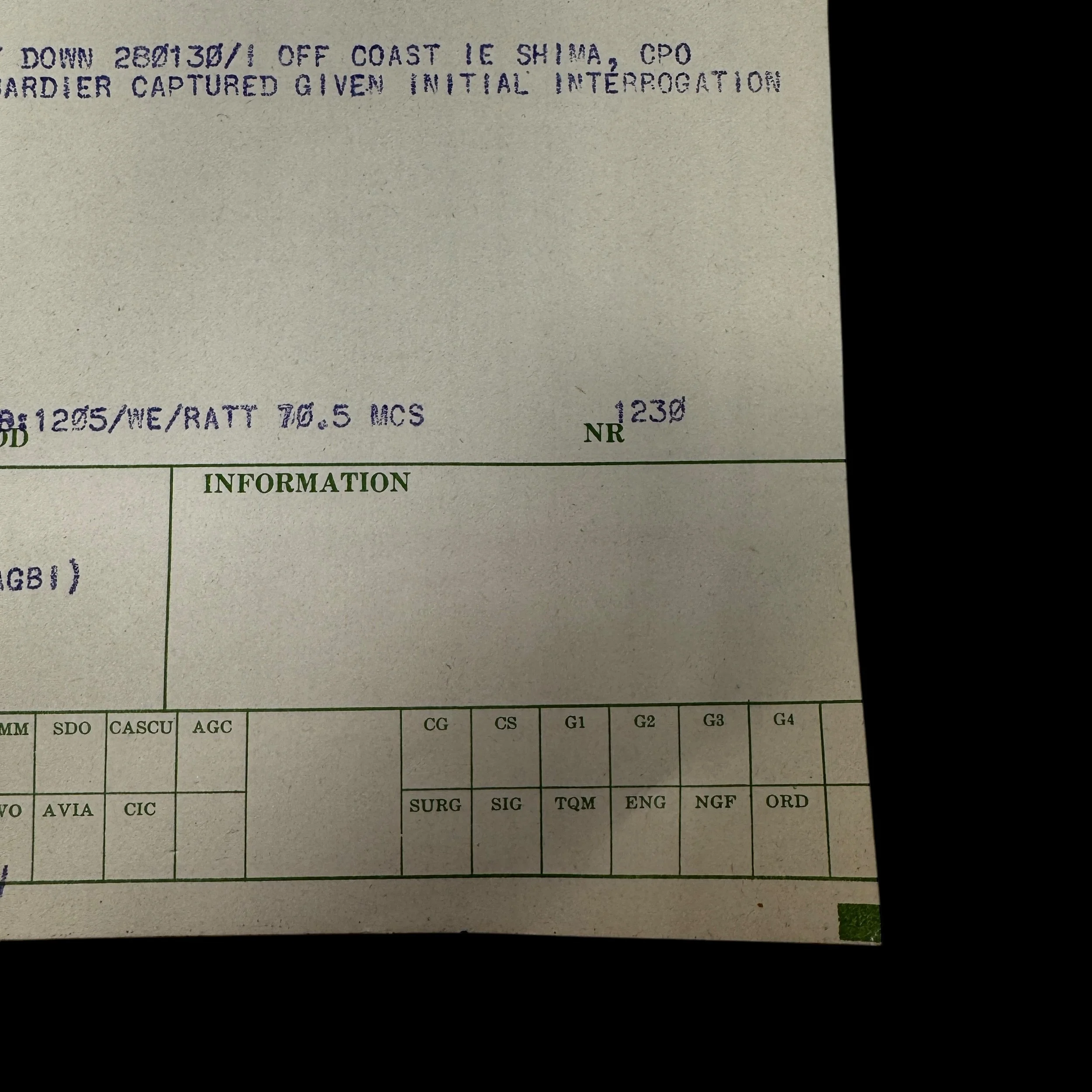
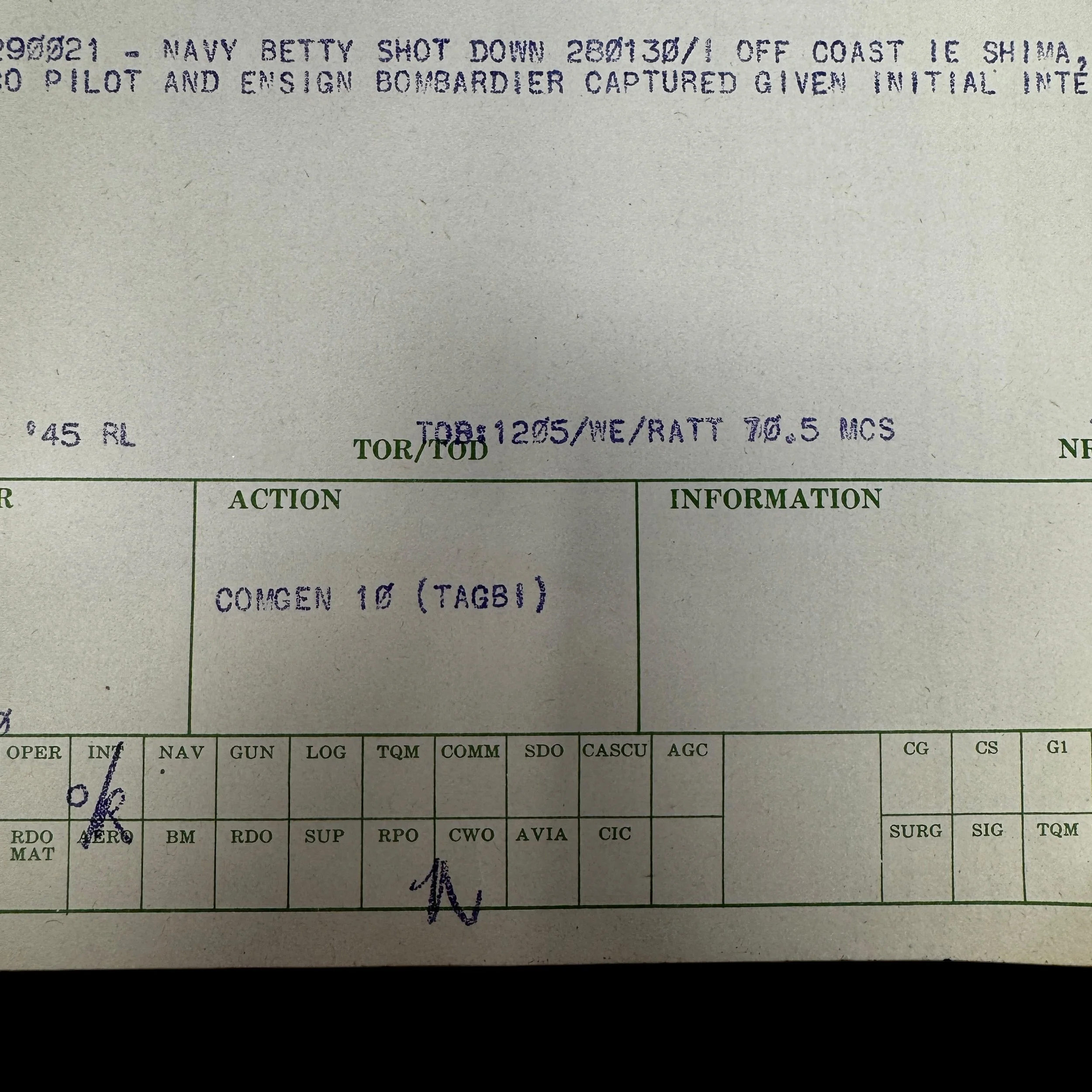
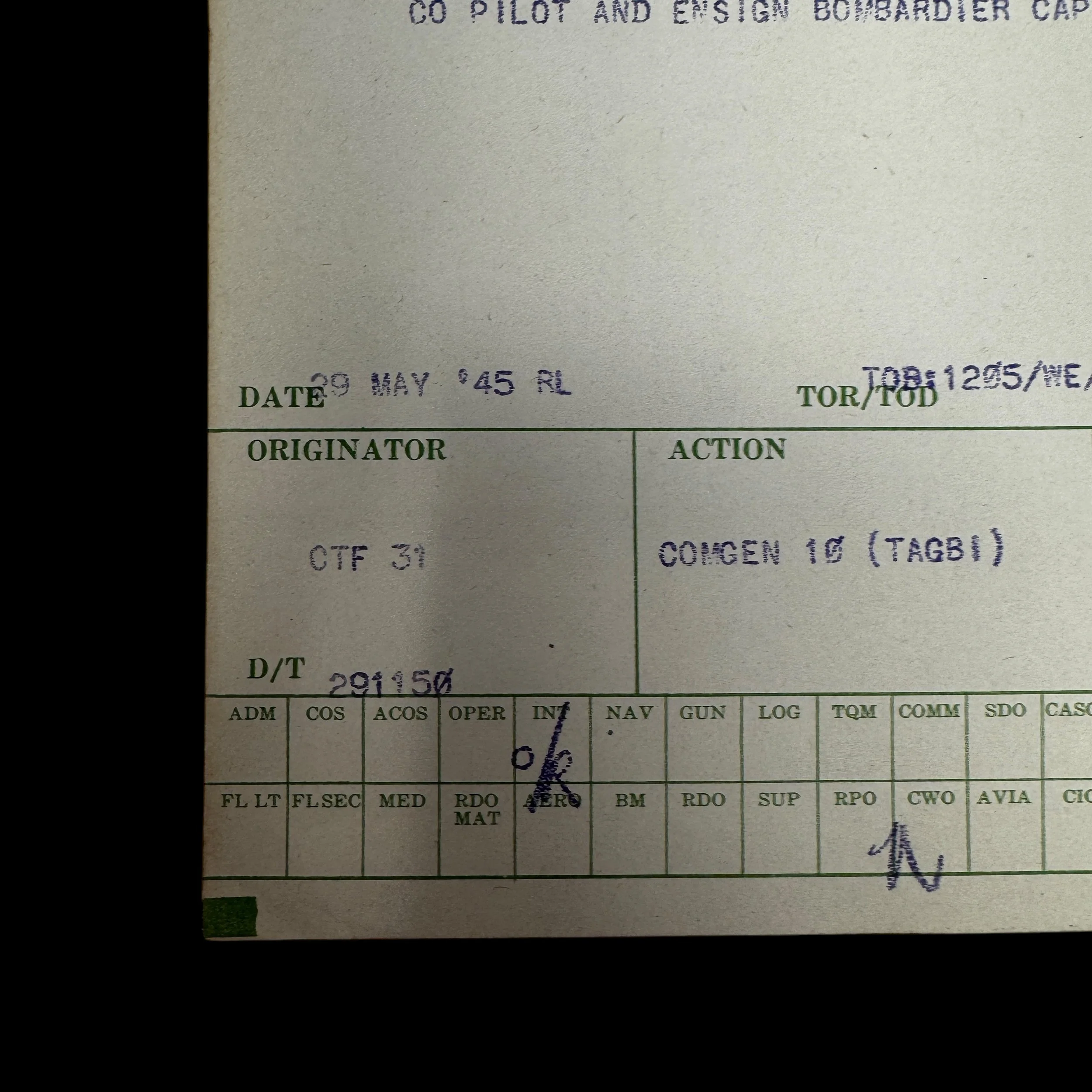
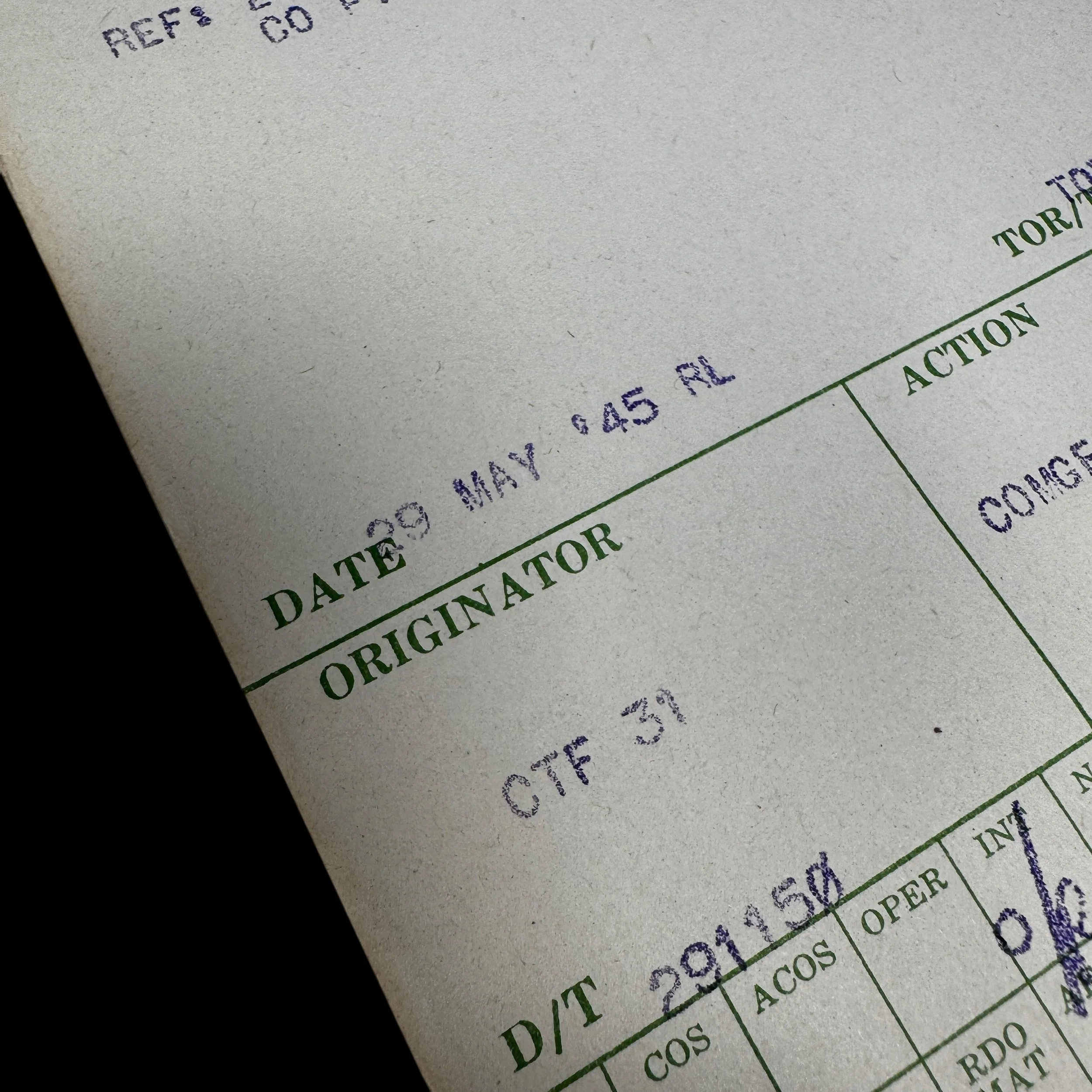


EXTREMELY RARE! WWII "SECRET" May 29th, 1945 Battle of Okinawa Rear "Commander of Amphibious Group Five" Admiral Jerauld Wright Combat Intelligence Report (1 Page)
Comes with C.O.A.
Dated May 29th, 1945, this secret World War II Pacific Theater combat report provides an update on the transfer of two captured Japanese aviators for interrogation during the Battle of Okinawa. The prisoners, consisting of a pilot and co-pilot of a Mitsubishi G4M “Betty” bomber, were taken into custody after their aircraft was shot down off the coast of Ie Shima during ongoing combat operations.
Following their capture, the two airmen were transported under guard to a secured rear area, where they were to undergo extensive interrogation by U.S. intelligence officers. The report notes the significance of their capture, as intelligence gathered from downed enemy pilots was critical in assessing Japanese tactics, operational planning, and the potential for further kamikaze attacks against American naval and ground forces in the region.
With the battle for Okinawa still raging, the report highlights the continued threat posed by Japanese air operations, particularly the deployment of suicide aircraft aimed at disrupting U.S. advances. The capture of these aviators provided a rare opportunity for Allied forces to extract valuable information on enemy air strategy, aircraft deployment, and morale as the Pacific War neared its final stages.
1 PAGE
This extremely rare and museum-grade WWII artifact is a U.S. Naval Communication Battle of Okinawa combat intelligence report for Rear Admiral Jerauld Wright - Commander of Amphibious Group Five (a newly created unit of the Amphibious Forces, U.S. Pacific Fleet, commanded by Vice Admiral Richmond Kelly Turner).
Dated May 29th, 1945 this SECRET U.S.N. Ryukyu Islands (Operation Iceberg) intelligence report was produced on Rear Admiral Jerauld Wright's flagship USS Ancon (AGC-4). It provided intelligence to Rear Admiral Jerauld Wright during his command of the Task Group during the Invasion of the Ryukyu Islands - Battle of Okinawa - Operation Iceberg.
This intelligence report provided Rear Admiral Jerauld Wright - Commander of Amphibious Group Five with intelligence of the Pacific Theater operations such as U.S. Marine advances, POW captures, MIA reports, Japanese strongholds, divisional movements, retreats, resistance pockets, airstrikes reports, etc.
Rear Admiral Jerauld Wright was awarded a Bronze Star, with a combat "V" device, for his leadership as the commander of Task Group 51.2 during Operation Iceberg.
Amphibious Group Five:
In November 1944, Rear Admiral Wright took command of Amphibious Group Five, a newly created unit of the Amphibious Forces, U.S. Pacific Fleet, commanded by Vice Admiral Richmond Kelly Turner. Wright's group would be involved in the invasion of the Ryukyu Islands (Operation Iceberg), the island of Okinawa being the key objective. Once taken, U.S. forces would use Okinawa as a staging area for the eventual invasion of Japan, and a base for the B-29 Superfortress bombers of the U.S. Seventh Air Force to attack the Japanese home islands.[ Amphibious Group Five would transport the 2nd Marine Division, Major General Thomas E. Watson, USMC, commanding, with Wright flying his flag from USS Ancon (AGC-4).
For Operation Iceberg, Wright's force was designated Demonstration Group Charlie (Task Group 51.2), whose mission was to serve as a decoy force working in conjunction with the Southern Attack Force (Task Force 55) commanded by Rear Admiral John L. Hall while the Western Islands Group (Task Group 51.1) under Rear Admiral Ingolf N. Kiland and the 77th Infantry Division secured Kerama Retto and other offshore islands before landing at Ie Shima. Task Group 51.2 would subsequently serve as a floating reserve for the U.S. Tenth Army (Task Force 56), commanded by Lieutenant General Simon B. Buckner, USA, before returning to Saipan.
Wright was ordered to Pearl Harbor to begin planning the invasion of the Japanese home islands, which would begin with Operation Olympic, the invasion of the southern island of Kyūshū. Wright's Amphibious Group Five would be part of the 5th Amphibious Force, commanded by Vice Admiral Harry W. Hill, which would land the V Amphibious Corps (VAC) on the west coast in the Kaminokawa – Kushikino area. Amphibious Group Five would consist of four old battleships, ten cruisers, fourteen destroyers, and seventy-four support craft. However, Operation Olympic and the follow-up invasion of Honshū (Operation Coronet) were cancelled following the dropping of the atomic bombs on Hiroshima and Nagasaki. Rear Admiral Jerauld Wright was awarded a Bronze Star, with a combat "V" device, for his leadership as the commander of Task Group 51.2 during Operation Iceberg.